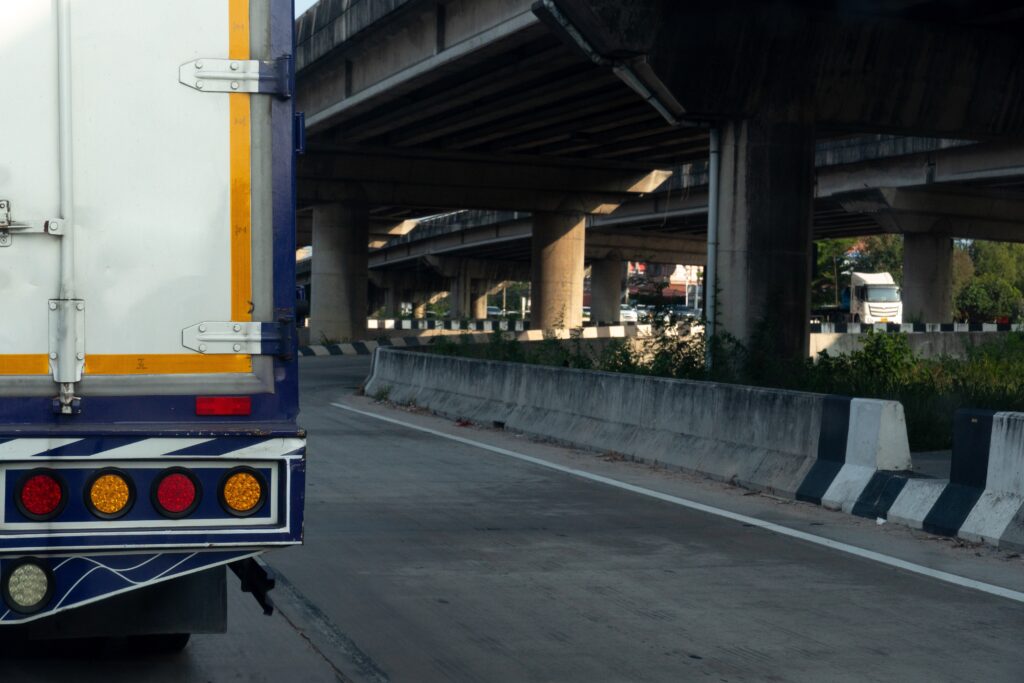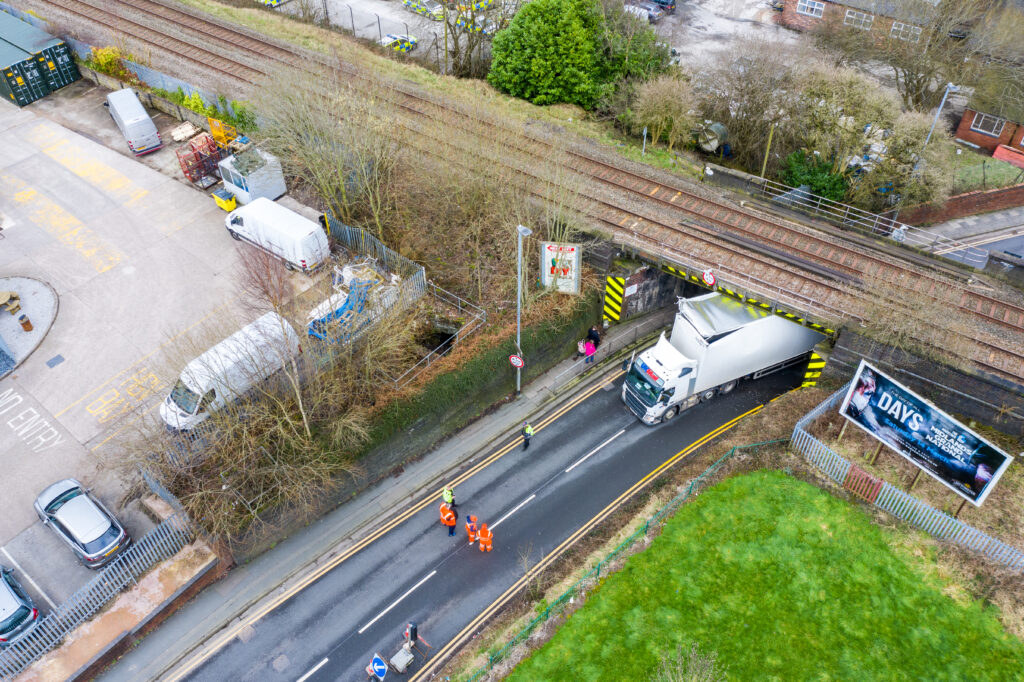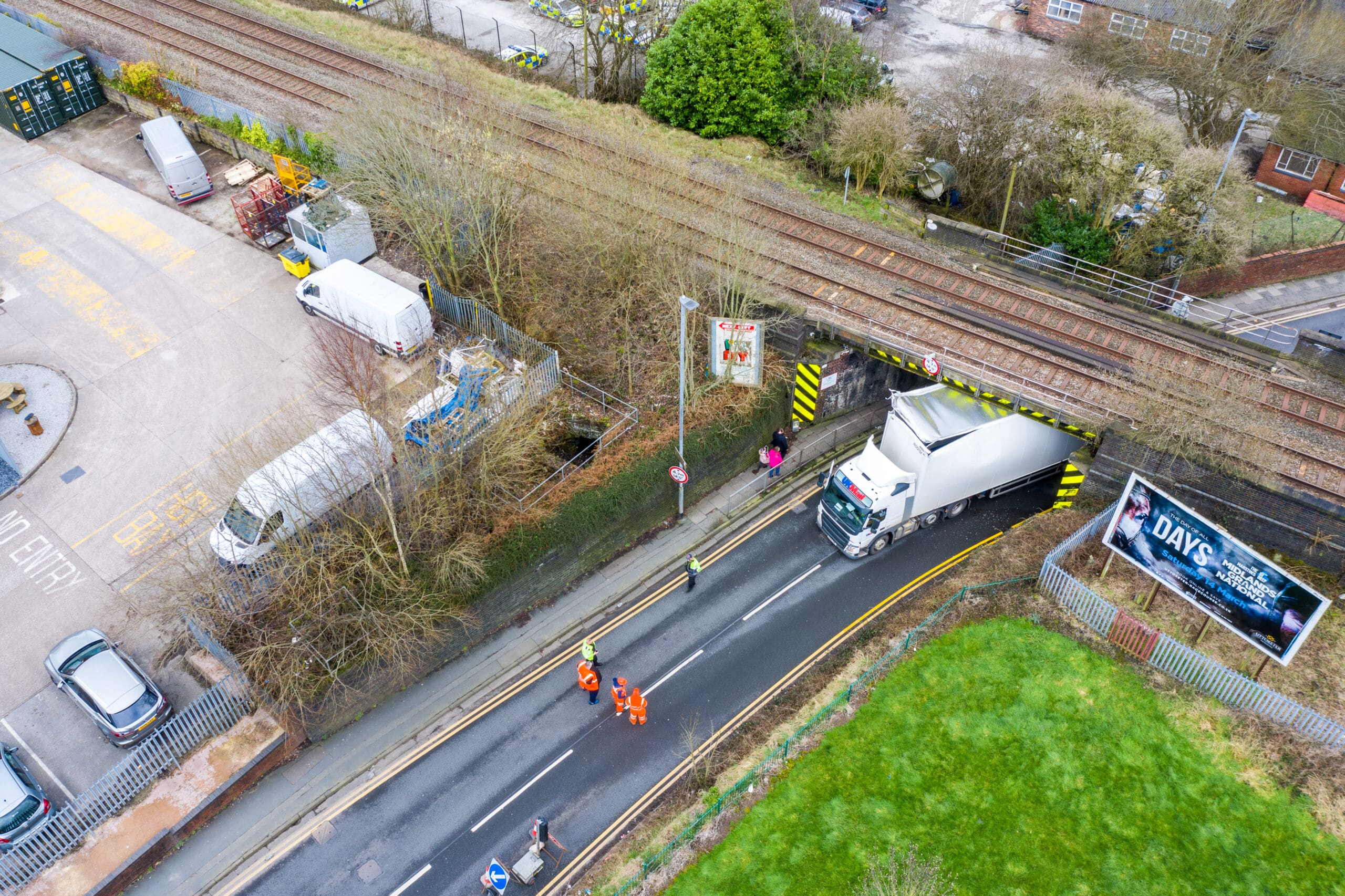Table of Contents
Much of your car driving lessons were concerned with spotting and handling the hazards and dangers of the UK roads – and by now you’ll probably be an old hand.
But, for the largest vehicles on the roads – HGVs and LGVs – small hazards can become really big problems if they are not planned for or spotted in good time.
So, what are the most frequent road dangers for HGVs and how can you avoid them?

Most common road dangers – HGVs and other large vehicles
While it can differ widely depending on where in the world you drive, if you are based in the UK the most common road dangers will likely include changeable speed limits and road features – including low bridges and weighbridges.
While they may not be inherently dangerous in and of itself, the issue comes from the size of the vehicle you are driving in conjunction with these occurrences.
Put simply, if you aren’t aware of these issues and don’t plan for them on your routes – you could end up in trouble.
*Did you know HGV Training Network can help aspiring drivers drive a variety of vehicles – from coaches and buses to HGVs? Browse our training types to find out more!

Changeable speed limits and capped speeds
Just as cars and motorbikes will face different speeds depending on the type of road they are on, HGVs, LGVs, and articulated lorries will too – but for the largest vehicles, this also depends on their weight.
This means that you will need to be aware of speed changes in good time and begin breaking earlier, as it will take you longer to slow down to the new (lower) speed restriction given the size and weight of the vehicle.
However, for HGVs there is an added wrinkle – speed limiter restrictions or capped speeds.
Why are lorries limited to 56mph?
In April 2015, EU laws were introduced, meaning that speed limiter requirements were set at 56mph or less.
This can mean that drivers covered by EU laws will be limited to 56mph or less and physically cannot drive faster than this, despite the speed limit being 60 or 70mph – for example on dual carriageways or motorways.
HGV drivers travelling in Scotland also face issues, being restricted to 50mph if their vehicle is over 7.5 tonnes.
UK HGV drivers, on the other hand, can drive at the national speed limit but must understand that other HGVs driving next to them may be restricted to lower speeds – so to give them space and extra time.

Low bridges
Another common issue is a low bridge.
Classed as low if it has a clearance of less than 16 feet 6 inches (about 5 metres), these bridges should be clearly signposted with either round regulatory or warning triangles to stop instances of “bridge bashing”.
They can also feature blue rectangular warning signs in the run-up to them and may even have a suggested alternative route you can follow.
If the bridge has different headroom allowances depending on where you are on the road, you may see different warning signs located immediately above the respective lanes. In this instance, it may be safe for you to merge into the taller (usually middle) lane if there is sufficient headroom – and drivers of smaller vehicles are expected to give way to you in this instance.
In each of these signs, the height of the bridge will be given in meters and feet – giving you a chance to check the height of your vehicle and change your route.
Drivers should be aware though that not all bridges will feature the appropriate signage, because of issues with theft, broken stock, or vandalism – so it’s always worth planning or checking your route ahead of time to avoid unpleasant surprises.
*Want to know more about our training locations? With over 50 dotted across the UK – there will be a perfect site for you nearby!
How to avoid low bridges
To solve the problem of low bridges, various solutions have been implemented and devised – with varying degrees of success. These are explored in more detail below.
Google Maps bridge heights
Google Maps is very frequently used and can show hazards like traffic or roadworks.
However, it was not designed for HGVs or similar large vehicles and excels at planning routes for smaller traffic like cars and motorbikes.
As such, it doesn’t always (or if at all) include reliable, up-to-date information about low bridges – which means that while it is useful for car drivers, it’s not great for truckers.

AA Trucker’s Atlas Britain
If you are more old school or you want an option for emergencies that don’t rely on a phone signal, you could invest in an atlas!
With options including the AA Trucker’s Atlas Britain or the Philips Atlas – Trucker’s Britain, it could be a smart option to keep in your work bag.
The issue with print media, however, is that it can go out of date pretty quickly and there is no guarantee that every bridge will be listed.
Still, some HGV drivers prefer to have a recent edition of a trucking atlas – as unlike a satnav, it will be able to guide you even in areas of low or no signal.
Truckers bridge height map – the HGV low bridge map
Reportedly created and compiled by Chris Minihan, there is a Google My Maps overlay which demarcates landmarks including low bridges, public weighbridges, and truckstops right here in the UK.
This HGV low bridge map can reportedly be used in conjunction with Google Maps to show the exact location of the low bridge, along with the height of the bridge – which can help you avoid bridge bashing.
However, as this map has been compiled by an individual, it is always worth checking multiple sources if you can and looking carefully for signage on the approach. If you do find any inconsistencies, please also consider reporting them to the map creator so it can benefit others.
Specialist HGV route planning apps
There are a large number of HGV-specific route planning apps, which include hazards like low bridges, including:
- eLogii
- IMPARGO
- Descartes
- Sygic GPS Truck & Caravan
- TruckMap – Truck GPS Routes
These applications are designed to cater specifically for HGV or LGV drivers and, as such, should warn you of potential road dangers for HGVs.
As always though, we recommend thoroughly testing them and reading reviews before choosing your main app – as they are also compiled and run by an individual rather than a national road network so may not always be 100% correct.
Find experienced instructors at HGV Training Network
If you have just started HGV training, CPC training, or are considering a professional driving job, thinking about all of the hazards on the road can be intimidating.
However, with the calm, experienced guidance of past HGV drivers – who make up our HGV driving instructor staff – you will soon be able to handle these minor everyday stresses with confidence and aplomb.
And, thanks to low APR HGV training finance, there’s no need to put it off any longer – just send us an email at contact@hgvtrainingnetwork.com or fill in our contact form and we’ll get back to you.








